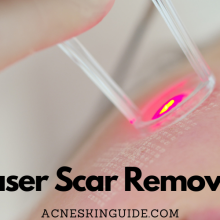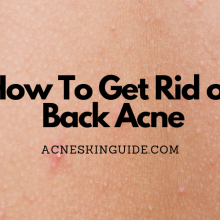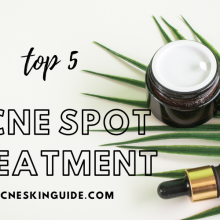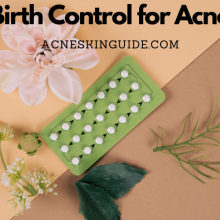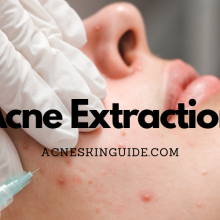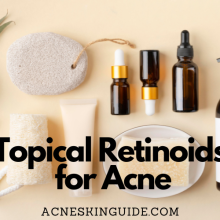Blue Light And Acne Treatment – Let It Glow | AcneSkinGuide
Summary of Laser Scar Removal Treatments
Blue light therapy is a non-invasive, light-based approach to treating acne that utilizes specific wavelengths of blue light (405-420nm) to kill acne-causing bacteria (P. acnes) on the skin’s surface and within pores. The blue light excites porphyrin molecules within the bacteria, causing the release of reactive oxygen species that rupture and kill the bacteria cells.
Numerous clinical studies have demonstrated the efficacy of blue light in reducing inflammatory acne lesions, with results comparable to standard treatments like benzoyl peroxide and antibiotics. Blue light therapy can be administered in a dermatologist’s office or through at-home devices like LED wands, masks, or panels, offering a non-invasive, drug-free option for managing mild to moderate acne with minimal side effects.

Shining a Blue Light on Acne Treatment
When it comes to treating acne, there are many options available ranging from topical creams to oral medications. However, one treatment that has gained significant traction in recent years is blue light therapy. This non-invasive, light-based approach offers an effective way to combat acne-causing bacteria without harsh chemicals or drugs. Let’s take a closer look at how it works and whether it could be right for you.
The Science Behind Blue Light
Blue light therapy for acne utilizes light in the wavelength range of 405-420nm on the visible light spectrum. This specific blue light has been shown to have powerful antimicrobial properties against the p.acnes bacteria that causes acne inflammation and breakouts.
How does it work? The blue light excites porphyrin molecules within the p.acnes bacteria. This causes the release of reactive oxygen species that rupture and kill the bacteria cells. Essentially, the blue light acts as a targeted antimicrobial agent to eliminate acne-causing bacteria on the skin’s surface and within pores.
In addition to its bacteria-killing effects, blue light has also been found to reduce inflammation and promote faster healing of acne lesions. It can help dry out excess oils and unplug clogged pores as well.
Professional vs At-Home Treatments
Blue light acne treatments can be administered in a dermatologist’s office or using at-home devices. In-office options like intense pulsed light (IPL) and laser therapies deliver higher concentrations of therapeutic blue light. These sessions are more intensive but require less frequent visits, typically every 3-4 weeks.
For at-home use, blue light therapy devices come in the form of LED wands, masks, or panels that emit lower levels of blue light wavelengths. While not as powerful as in-office treatments, these can be used daily or multiple times per week to help control acne flare-ups between professional treatments.
Some popular at-home options include:
- Wands like the TrovelBeauty or Spa Sonic Pro
- Masks such as the Dr. Dennis Gross Skincare DRx SpectraLite FaceWare Pro
- Desktop and handheld panels from brands like Neutrogena and LG
Many devices combine blue light with red light, which can help promote healing and collagen production when used together.
Is It Effective for Acne?
Numerous clinical studies have demonstrated the efficacy of blue light in treating inflammatory acne vulgaris. One study found blue light led to a 76% reduction in acne lesion counts after 12 weeks. Other research shows blue light can be just as effective as other standard acne treatments like benzoyl peroxide, antibiotics, and retinoids.
Blue light therapy tends to work best for mild to moderate acne with whiteheads, blackheads, and red bumps. Those with more severe cystic acne may want to combine blue light with other treatments under a dermatologist’s guidance.
While results can vary, most see noticeable improvement within 4-6 weeks of regular treatment. Continued maintenance is key for long-lasting acne prevention.
Potential Side Effects & Downsides
One of the biggest advantages of blue light therapy is its favorable safety profile compared to many prescription acne treatments. The most common side effects are temporary skin redness, dryness, and mild irritation which typically resolves quickly.
That said, there are some precautions to consider. Blue light should not be used by those with photosensitivity conditions like lupus. It can potentially cause eye damage, so protective eyewear should always be worn during treatments.
With at-home devices especially, there are some downsides to be aware of:
- Not as powerful as in-office options which can limit results
- Requires consistency using multiple times a week
- Can add time and hassle to skincare routine
- Need to carefully research legitimate, effective devices
It’s also important to note that while blue light treats bacterial acne, it may be less effective for hormonal breakouts or acne driven by other internal factors.
Getting the Best Results
To maximize blue light therapy’s benefits, there are some best practices to follow:
- Combine with a gentle, non-irritating skincare regimen free of oils and pore-clogging ingredients
- Follow pre-treatment prep steps like removing makeup and cleansing skin
- Consider adding a retinoid cream to help unclog pores
- For severe acne, use blue light under dermatologist supervision
- Make lifestyle changes like a low-glycemic diet to reduce inflammation
- Be consistent with sticking to a regular treatment schedule
- Adjust treatment times or frequency for sensitive skin types
- Allow 8-12 weeks to see maximum results before reassessing
While blue light therapy takes some diligence, its non-invasive, drug-free approach makes it an appealing option for many seeking an effective acne solution with minimal risk.
Costs & Where to Buy
At-home blue light devices can be an affordable option, with many priced between $25-200. Some top-rated choices include:
- Newkey LED Light Therapy (around $25 on Amazon)
- Project E Beauty LED Mask ($90)
- Omnilux Clear-U ($400 but medical-grade)
In-office treatments from a dermatologist can cost $75-200 per session. Most require a package of 4-8 treatments spaced 2-4 weeks apart.
Whether considering professional or at-home therapy, only purchase from reputable brands that are FDA-cleared and proven safe for this use. Do your research on product reviews and outcomes.
A Bright Future
While blue light therapy is growing rapidly as an acne treatment, ongoing research and technological innovation could unlock even greater potential in years to come. Optimizing wavelengths, pulsed delivery methods, and combination therapies may boost effectiveness.
Some dermatologists are hopeful blue light could one day be leveraged to treat other inflammatory skin conditions like eczema, rosacea, and even signs of aging and sun damage if used in the right therapeutic dosages.
For now, when integrated into a comprehensive skincare approach, blue light provides a promising solution for many looking to get stubborn acne under control without oral medications or harsh topical side effects.
FAQs and Answers
Is blue light therapy safe for darker skin tones?
Yes, blue light therapy is generally considered safe for darker skin tones, but there are a few important points to keep in mind:
1) Higher melanin levels in darker skin types can make the skin more susceptible to hyperpigmentation issues from light exposure. So there is a slightly elevated risk of temporary darkening or discoloration after blue light treatments.
2) Dark skin is more prone to keloid scarring, so any irritation from the blue light could potentially lead to raised scar formation in some individuals.
3) That said, when used properly at therapeutic doses by an experienced provider, blue light therapy can be safe and effective for treating acne in patients with darker Fitzpatrick skin types (IV-VI).
Some precautions that may help reduce risk for darker tones include:
- Using lower light intensity and/or shorter treatment times initially
- Avoiding overlapping treatment areas
- Applying sunscreen/photoprotection after treatments
- Being monitored closely by a dermatologist, especially for first few sessions
Overall, blue light is considered safer for darker skin compared to other harsher acne treatments. But care should be taken to adjust parameters and follow post-treatment protocols to minimize any potential pigmentation concerns. Consulting an experienced professional is recommended.
Can I use blue light therapy if I am taking Accutane or other acne medications?
It is generally not recommended to use blue light therapy while taking oral isotretinoin (Accutane) or certain other acne medications. Here’s a more detailed look at the reasons why:
Accutane (Isotretinoin)
- Accutane causes increased photosensitivity, meaning the skin is much more sensitive to light exposure.
- Using blue light therapy during an Accutane course can significantly increase the risk of burning, excessive dryness, and irritation.
- Dermatologists advise avoiding any light-based treatments like blue light when on this powerful acne medication.
- It’s best to wait until you have been off Accutane for several months before considering blue light therapy.
Other Acne Medications
- Topical retinoids like tretinoin make skin more photosensitive, so caution is warranted with concurrent blue light use.
- Antibiotic pills like doxycycline can also cause photosensitivity in some cases.
- Blue light may deactivate or degrade some topical acne treatments if applied before light exposure.
General Precautions
- Always consult your dermatologist before using blue light if taking any acne medications.
- They can evaluate your medication regimen and skin sensitivity to determine if it’s safe.
- Adjustments like lower light intensity or shorter sessions may be recommended with certain drugs.
The increased skin sensitivity caused by many acne drug treatments makes blue light therapy riskier, as it can exacerbate dryness, peeling, redness and potentially cause burns or scarring. It’s best to avoid blue light completely when on Accutane, and use caution with other medications.
How does blue light compare to other light therapies like red or infrared light?
Blue light therapy differs from red light and infrared light therapies in several key ways:
Blue Light (415-420nm wavelength):
- Targets and kills acne-causing bacteria like P. acnes
- Has an antimicrobial, anti-inflammatory effect
- Helps dry out excess oils and unplug pores
- Penetrates outer skin layers more superficially
Red Light (630-700nm wavelength):
- Does not directly kill bacteria, but reduces inflammation
- Promotes wound healing and skin repair
- Stimulates circulation and collagen production
- Penetrates deeper into the skin’s layers
Infrared Light (700-1000nm wavelength):
- Longest wavelengths penetrate deepest into skin
- May help reduce sebum production in oil glands
- Has anti-inflammatory benefits
- Promotes circulation and tissue repair
Key Differences:
- Blue light primarily targets bacteria, red light promotes healing
- Red and infrared act deeper in skin versus blue light’s surface effects
- Blue is best for active acne, red/infrared for reducing inflammation/scarring
Many at-home devices now combine blue and red lights to leverage both antimicrobial and healing benefits. Infrared may be added for additional sebum-reducing effects.
Professional treatments often use blue light first to treat active acne, followed by red light therapy to promote faster healing of lesions.
So in summary, while all light therapies can help acne, blue specifically targets the root bacterial cause, while red/infrared aid in the treatment and recovery process through other mechanisms.
What’s the difference between blue light therapy and photodynamic therapy?
The main difference between blue light therapy and photodynamic therapy (PDT) for acne treatment lies in the use of a photosensitizing agent.
Blue Light Therapy:
- Uses just the blue light wavelengths (typically 415-420nm) alone
- Does not require any type of sensitizing solution or cream
- The blue light directly targets and kills acne-causing bacteria on the skin
- It also has some anti-inflammatory effects
Photodynamic Therapy:
- Combines the use of blue light or other wavelengths
- With the prior application of a photosensitizing topical solution (e.g. 5-aminolevulinic acid)
- This solution gets absorbed into the skin and makes the bacteria much more sensitive/vulnerable to the light
- Enhances the antimicrobial effects when the light is applied
So in PDT, the photosensitizer acts as a catalyst – it makes the therapy more intensive and effective against the acne bacteria when activated by the light source.
Other key differences:
- PDT requires more pre-treatment preparation applying the solution
- PDT treatments tend to be more expensive than just blue light alone
- PDT may have higher risks of pain, redness, swelling after treatment
Blue light is less invasive and can be done frequently at lower concentrations. PDT provides a stronger, longer-lasting effect but is more intensive.
Many dermatologists use blue light first to treat active acne, then follow with PDT for more stubborn cases or to achieve higher acne clearance rates.
Can blue light therapy be used for body acne or just the face?
Blue light therapy can potentially be used to treat body acne, not just acne on the face. However, there are some important considerations:
Face vs. Body Acne Devices:
- Most at-home blue light devices are designed specifically for targeted treatment of facial acne.
- They come as small wands, masks, or panels that are shaped and sized to properly cover just the face.
Larger Coverage Options:
- There are some larger blue light therapy panels or wands available that can be used to treat body areas like the back, chest, shoulders etc.
- Professional dermatology clinics may have bigger LED bed systems that can accommodate full body exposure.
Treatment Challenges:
- Treating body acne with blue light can be more difficult and time-consuming than the face due to the larger surface areas involved.
- It requires holding the device at proper distances over each area of the back, chest, etc. which can be awkward.
- Full coverage may require multiple sessions or missing spots.
Potential for Greater Side Effects:
- With increased light exposure over larger body areas, there could be a higher risk of adverse effects like redness, dryness, and irritation.
- Protective eyewear is a must when treating the chest/shoulders area.
So in summary – while blue light absolutely can be an effective treatment for body acne, it may require different devices, longer treatment times, and extra precautions compared to just treating the face. Working with an experienced dermatologist is recommended, especially for widespread body breakouts.

